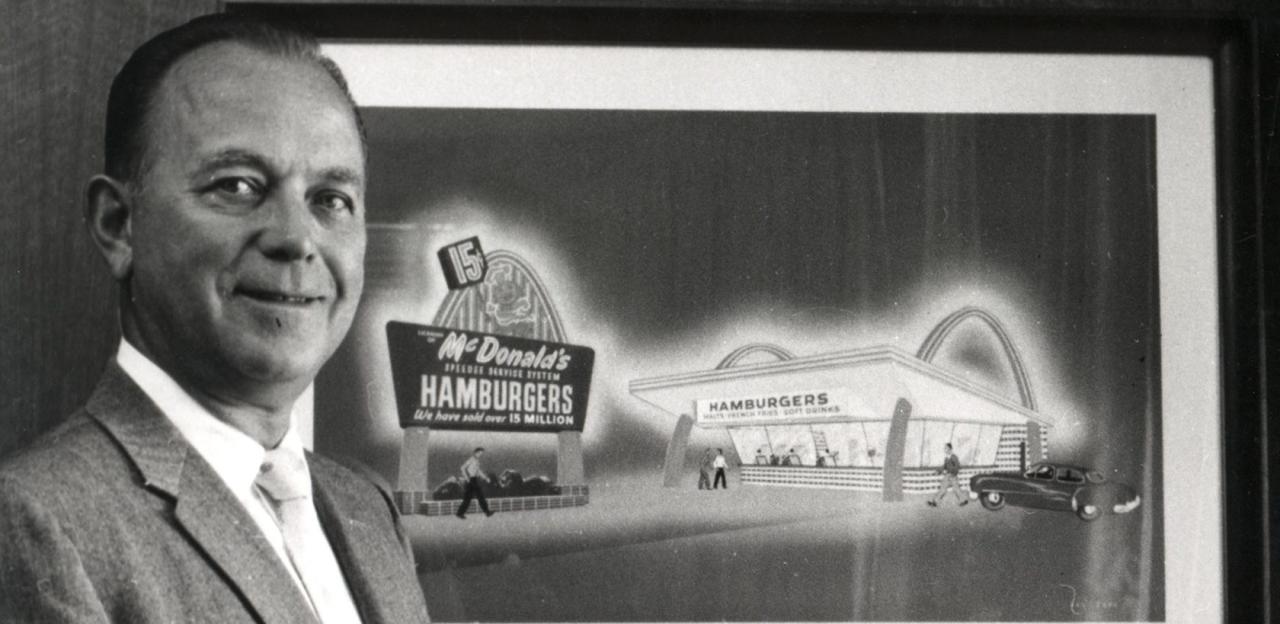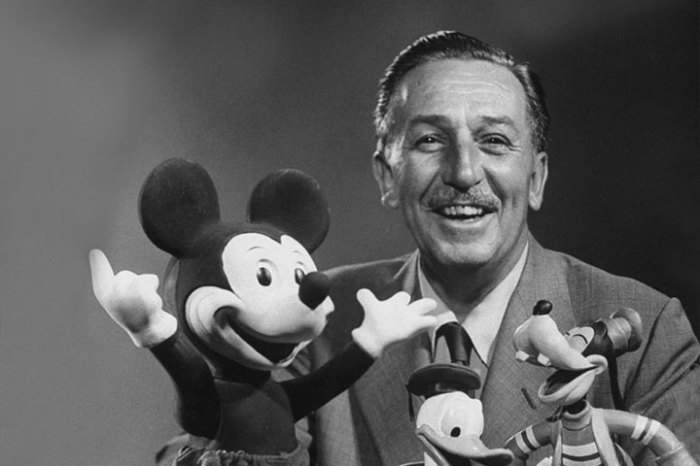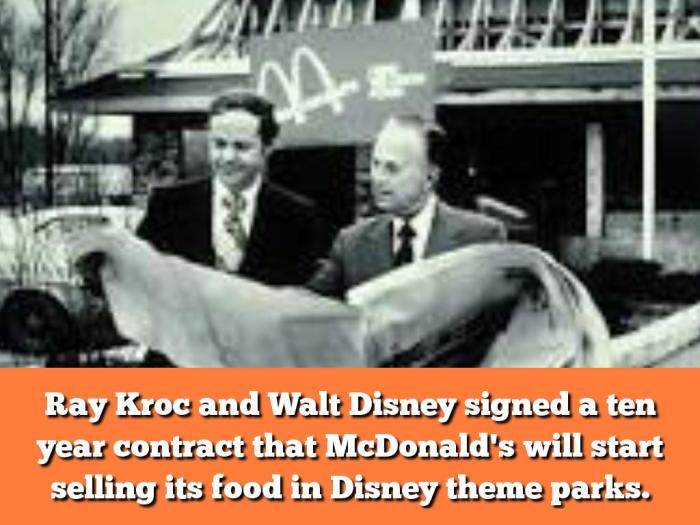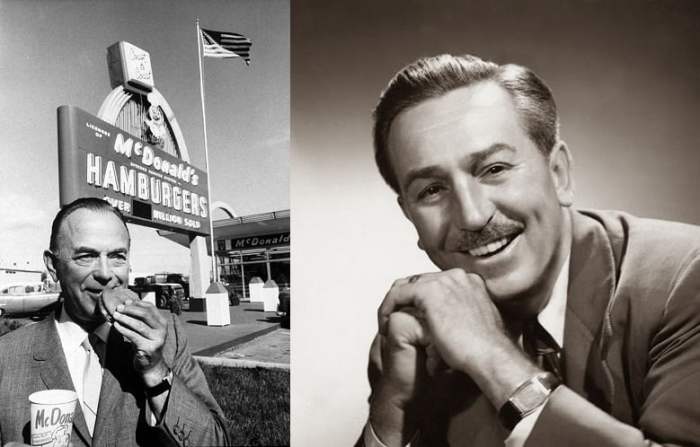Ray Kroc and Walt Disney, two iconic figures in American business and entertainment, left an indelible mark on the world with their visionary leadership and innovative ideas. Their stories of entrepreneurial success and cultural impact continue to inspire and fascinate generations.
From Kroc’s humble beginnings as a milkshake machine salesman to Disney’s groundbreaking contributions to animation and theme park entertainment, these two visionaries transformed their respective industries and left a lasting legacy on American culture.
Early Lives and Career Paths

The early lives of Ray Kroc and Walt Disney played a significant role in shaping their entrepreneurial journeys. Their childhood experiences, education, and initial career pursuits laid the foundation for their eventual success in the business world.
Ray Kroc
Born in 1891 in Oak Park, Illinois, Ray Kroc had a humble upbringing. His father was a telegraph operator, and his mother worked as a piano teacher. From a young age, Kroc exhibited a strong work ethic and an entrepreneurial spirit.
He sold newspapers, delivered groceries, and worked as a soda jerk to earn extra money.
Kroc’s education was limited, as he dropped out of high school at the age of 15. However, he continued to educate himself through reading and practical experience. He worked various jobs, including as a piano player, a milkshake machine salesman, and a paper cup salesman.
Walt Disney
Walt Disney was born in 1901 in Chicago, Illinois. His father was a carpenter, and his mother was a homemaker. Disney showed an early interest in art and drawing. He attended the Kansas City Art Institute but dropped out after a short time to pursue a career in animation.
Disney’s early career was marked by both successes and failures. He founded several animation studios, but they all eventually went bankrupt. Undeterred, Disney continued to work on his craft and eventually created the iconic character Mickey Mouse in 1928. This marked a turning point in his career and laid the foundation for the Walt Disney Company.
Ray Kroc and Walt Disney were two of the most successful entrepreneurs of the 20th century. Their stories are inspiring and remind us that anything is possible if we set our minds to it. For more insights on the power of storytelling, check out the ode to my socks analysis . Coming back to Ray Kroc and Walt Disney, they both had a vision and they never gave up on their dreams.
They are a testament to the power of perseverance and hard work.
Building Business Empires

Ray Kroc and Walt Disney were visionary entrepreneurs who transformed their respective industries and left an indelible mark on the global business landscape. Their innovative approaches, relentless determination, and unwavering belief in their dreams enabled them to build business empires that continue to thrive today.
Ray Kroc’s Transformation of McDonald’s
Ray Kroc’s journey with McDonald’s began in 1954 when he stumbled upon a small drive-in restaurant in San Bernardino, California. Impressed by the restaurant’s efficient assembly-line system and delicious burgers, Kroc convinced the McDonald brothers to franchise their concept.
- Franchising Model:Kroc developed a rigorous franchising model that standardized the McDonald’s experience across all locations. This ensured consistent quality, service, and profitability, allowing the chain to expand rapidly.
- Marketing Techniques:Kroc was a master marketer who used innovative techniques to promote McDonald’s. He introduced the iconic golden arches logo, catchy jingles, and Ronald McDonald, the lovable mascot who became synonymous with the brand.
Walt Disney’s Creation of the Walt Disney Company
Walt Disney’s passion for animation and storytelling led to the creation of the Walt Disney Company, a global entertainment powerhouse. His contributions to the industry are immeasurable, and his legacy continues to inspire generations.
- Animation:Disney’s innovative animation techniques revolutionized the industry. His iconic characters, such as Mickey Mouse and Snow White, captured the hearts of audiences worldwide.
- Theme Parks:Disney’s vision extended beyond animation to the creation of immersive theme parks. Disneyland, the first of its kind, became a magical destination that brought his characters to life.
- Leadership Style:Disney was a visionary leader who fostered creativity and innovation within his team. He encouraged collaboration and experimentation, resulting in groundbreaking achievements in entertainment.
Similarities and Differences in Leadership Styles
Ray Kroc and Walt Disney were two of the most successful businessmen of the 20th century. They built vast business empires and left a lasting legacy on American culture. However, their leadership styles were quite different. Kroc was a tough and demanding leader, while Disney was more charismatic and visionary.
Decision-Making
Kroc was a decisive leader who made decisions quickly. He was not afraid to take risks, and he often made decisions without consulting with others. Disney, on the other hand, was more cautious in his decision-making. He liked to gather input from others before making a decision.
He also believed in taking calculated risks, but he was not as willing to gamble as Kroc.
Risk-Taking
Kroc was a risk-taker who was not afraid to try new things. He was willing to invest in new ventures, even if they were risky. Disney was also a risk-taker, but he was more calculated in his approach. He only took risks that he believed had a good chance of success.
Employee Management
Kroc was a demanding boss who expected a lot from his employees. He was not afraid to fire employees who did not meet his expectations. Disney, on the other hand, was a more compassionate leader who cared about his employees.
He believed in giving employees the opportunity to succeed, and he was willing to forgive mistakes.
Unique Qualities
Kroc was a brilliant businessman who had a knack for identifying and exploiting opportunities. He was also a master of marketing and promotion. Disney was a creative genius who had a gift for storytelling. He was also a visionary leader who was able to see the potential of new technologies.
Impact on American Culture: Ray Kroc And Walt Disney

Ray Kroc and Walt Disney stand as towering figures in American culture, their businesses leaving an indelible mark on the nation’s habits, entertainment, and social landscape. Their legacies extend far beyond the walls of their respective empires, shaping the very fabric of American society.
McDonald’s: Fast Food Revolution
Ray Kroc’s McDonald’s revolutionized the fast-food industry, making affordable, convenient meals accessible to millions. The company’s standardized menu, efficient service, and relentless expansion transformed American dining habits. The Golden Arches became a ubiquitous symbol of American consumerism and cultural influence.
Disney: The Magic of Entertainment
Walt Disney’s creative genius transformed the world of entertainment. His animated films, theme parks, and television shows captivated audiences of all ages, fostering a sense of wonder and escapism. Disney’s legacy extends beyond mere entertainment, as his creations have become cultural touchstones and symbols of American childhood.
Cultural Icons, Ray kroc and walt disney
Both Kroc and Disney became cultural icons, embodying the American dream of success and innovation. Their businesses have created countless jobs, stimulated economic growth, and inspired generations of entrepreneurs. Their names and brands have become synonymous with quality, entertainment, and American culture.
Business Practices and Ethical Considerations

Ray Kroc and Walt Disney were both pioneers in their respective industries, employing distinct business practices that shaped their companies’ success. This section examines their approaches to marketing, customer service, and employee relations, along with ethical considerations and controversies they faced.
Ray Kroc, the founder of McDonald’s, emphasized standardization and efficiency. He implemented a strict franchise system, ensuring uniformity in food quality, service, and operations across all McDonald’s restaurants. This approach allowed for rapid expansion and brand recognition but raised concerns about the loss of individuality and local flavor.
Marketing
Both Kroc and Disney were masters of marketing. Kroc’s “Speedee Service System” focused on speed, accuracy, and cleanliness, becoming synonymous with the McDonald’s brand. Disney’s “Disneyland Dream” promoted a magical experience that appealed to families and children, creating a loyal customer base.
Customer Service
Kroc believed in delivering consistent and friendly customer service. He implemented a “smile policy” for employees and emphasized the importance of cleanliness and prompt service. Disney’s focus on customer satisfaction extended beyond the parks, with initiatives like the “Guest Relations” department to address customer concerns.
Employee Relations
Kroc’s approach to employee relations was based on a hierarchical structure with strict rules and regulations. He emphasized discipline and efficiency, but also provided opportunities for advancement within the company. Disney, on the other hand, fostered a more creative and collaborative work environment.
He encouraged employee creativity and innovation, recognizing their contributions to the company’s success.
Ethical Considerations
Both Kroc and Disney faced ethical challenges during their careers. Kroc was accused of exploiting franchisees and engaging in anti-competitive practices. Disney was criticized for the treatment of animators and the portrayal of certain cultures in his films. However, they both took steps to address these concerns and maintain their reputations.
Q&A
How did Ray Kroc’s leadership style differ from Walt Disney’s?
Kroc was known for his aggressive and results-oriented approach, while Disney was more visionary and focused on fostering creativity.
What was the key to the success of McDonald’s?
Kroc’s innovative franchising model, standardized menu, and focus on efficiency and speed.
What were some of the ethical controversies surrounding Walt Disney’s business practices?
Concerns about labor practices and the portrayal of gender and race in Disney’s films and theme parks.